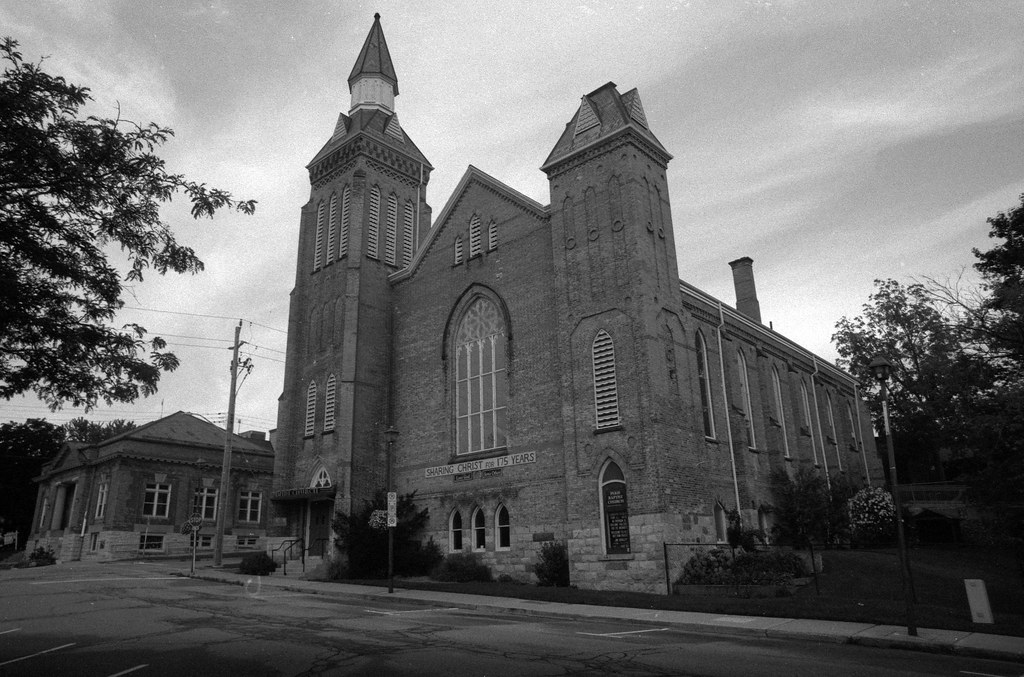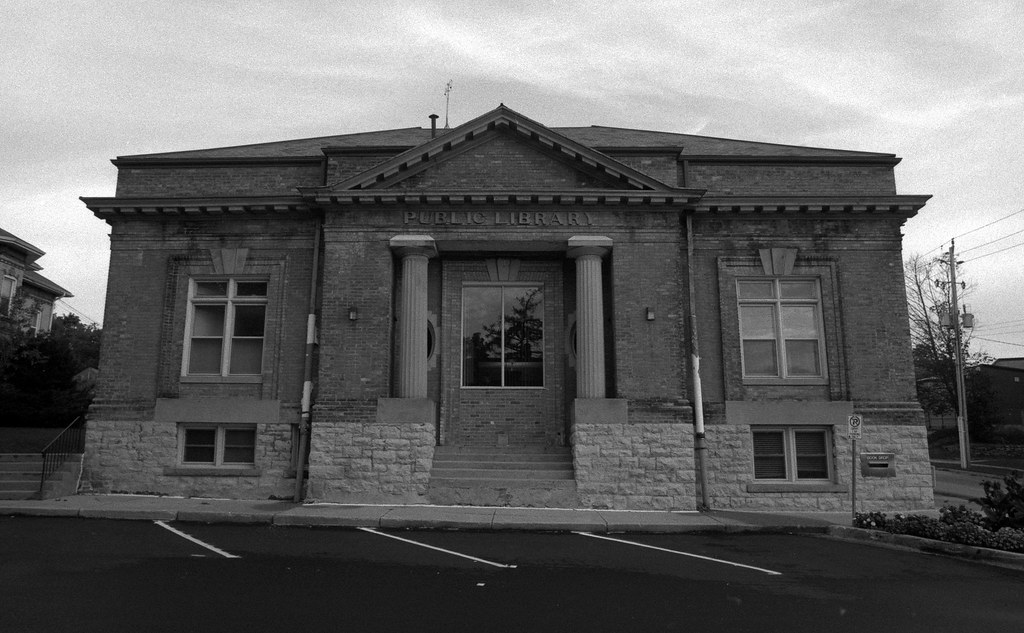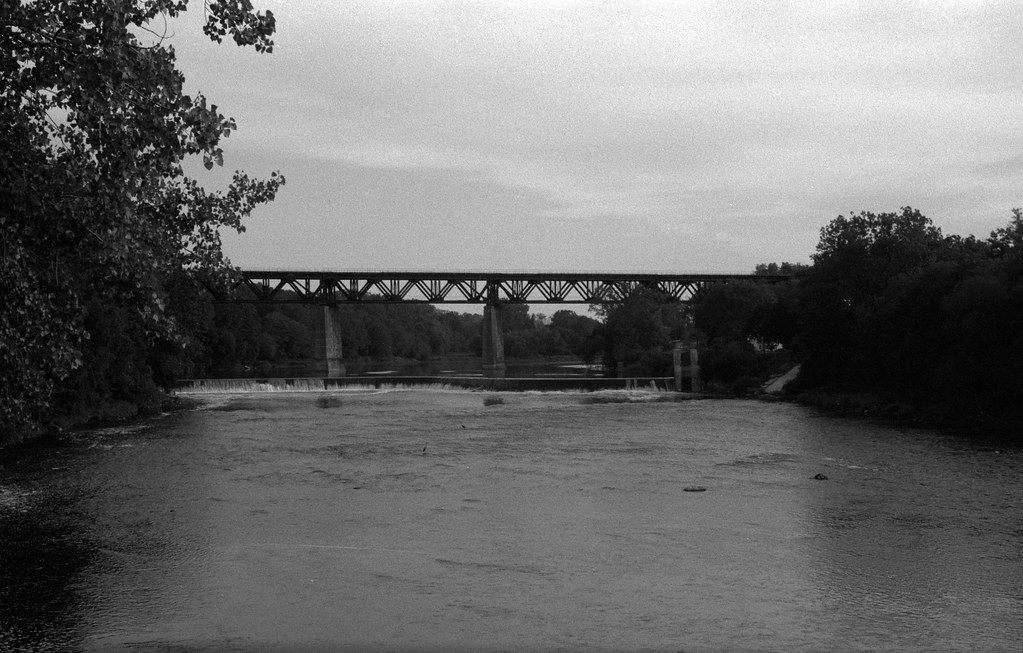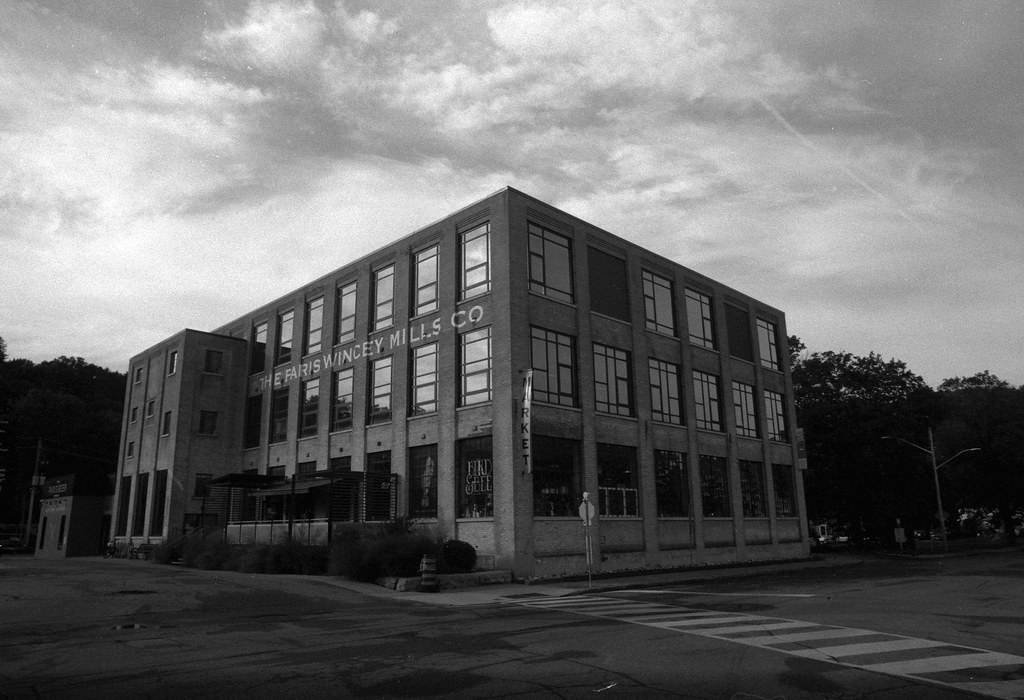I love that Ontario has a pile of wonderful small towns to explore, and many still carry through their wealth of heritage structures, and I’m glad I’ve been able to feature several of them here this year. While many are communities that I’ve been to many times, today we’re in one that I’ve only visited once before, the town of Paris, Ontario. The first time here, I was passing through on a New Years Eve on my way to a party in St. Thomas and only stopped for a brief time. But it kept on being in the back of my head. So here we are in a town that is surprisingly not named after the better known French capital but still carries a bit of a connection.

Nikon FM – AI Nikkor 24mm 1:2.8 – Fomapan 200 @ ASA-200 – Ilford Ilfotec HC (1+63) 9:00 @ 20C
The rich local landscape surrounding the Grand River Valley has been home to humans for thousands of years. The valley formed around the confluence of the Nith and Grand Rivers provided for rich soil and lush Carolinian forests. The earliest known people to walk this area were the Attiwonderonk, who, like other Neutral peoples, were killed and driven off during the Beaver Wars of the 1600s. The Mississaugas would move into the area, but no known settlements were established. During the formation of colonial Upper Canada, the Mississaugas signed their land over to the Crown, who granted it to the Haudenosaunee for their service in the French-Indian and American Revolutionary Wars, the entire Grand River Valley covered by the 1783 Haldimand and Simcoe Pact Treaties. But even then, the exact nature of that treaty remained vague, especially when a 1793 land survey by Augustus Jones discovered the presence of gypsum. Gypsum carries multiple uses, including the production of plaster and agricultural fertiliser. Both were in demand by the late 18th and early 19th centuries. Governor Simcoe ordered a road established from Dundas to the Grand River Valley. William Holme would be the first European to settle in the region, building a gypsum mine in 1822 and a mill to process the raw gypsum rock a year later. Holme’s operations expanded quickly, and by 1829 his estate stood at nearly 1,000 acres. On 7 May 1829, Holme sold his holdings to Hiram Capron, who surveyed a townsite and lots. Capron himself constructed a grist mill and iron foundry using the fast-moving Grand River to power his mills. The first cobblestone buildings went up in 1839, and the material became a popular choice for new houses and churches. The presence of good land, two fast-moving rivers, and minerals quickly attracted people to the region. The area became known as Oak Plains and was divided into two regions, upper and lower settlements. By 1846 the settlement housed some 1,000 people with several gypsum mines and mills, a grist, saw, and woollens mill. A foundry, tannery, hotel, tavern, five churches, and a post office with farm deliveries rounded out the settlement three times a week. In 1850 the village of Paris was incorporated under Capron as reeve. Paris was chosen because of the gypsum deposits influenced by that similarity to the ancient French capital. When the railroad arrived in the form of the Buffalo & Lake Huron Railway in 1856, it allowed the incorporation of the Town of Paris. And the community quickly grew, with gypsum continuing to act as the primary economic driving force with other mills and manufacturing businesses continuing to build in the region. Alexander Graham Bell sent the first long-distance telephone transmission in 1876, being received at the Dominion Telegraph building in downtown Paris from Brantford. The original 1822 gypsum mine ceased operations in 1905, but mining continues to this day, although at a smaller rate. Municipal independence ceased in 1999 when the towns and villages of Brant county amalgamated into a single government, with Paris being the most populous community.


Picking seven images proved rather tricky this week, as I am happy with almost all of them. The featured image was a toss-up between a wide shot of the downtown from the street or along the Grand River; given the similarities to Elora (also along the Grand River), I went with the waterfront shot as it has a better sense of flavour for the town. Then it was a matter of choosing the other six. Here is where I waffled the most about which ones to include, aiming to capture the architectural stylings of the community, which includes in the historic lower time a mix of Georgian, Edwardian, and Gothic Revival. While I am sad I missed out on capturing the upper town; it only means I’ll have to go back again, this time with Heather.


Given that I was working in an urban environment that I had some knowledge and having a variety of street widths and subject matters to work with, I went with a three-lens kit, the lenses I picked for this week, including the 24mm f/2.8, 50mm f/1.8, and 135mm f/2.8. And oddly enough, all but one image that made it into this post were taken with the 24mm lens, save the photo of the Penman Bridge. The one thing I wish I had brought with me is a pale yellow filter, at least for the 24mm lens, as I probably could have improved the sky separation, but overall I’m happy with the results. I combined developing with last week’s roll to save both time and chemistry, so these shots were processed in Ilfotec HC at 1+63, one of the few developers I like Fomapan 200 processed with as it gives good clean results.


Grab your helmets folks, next week we’re headed to Toronto’s Historic Fort York and going over the top!